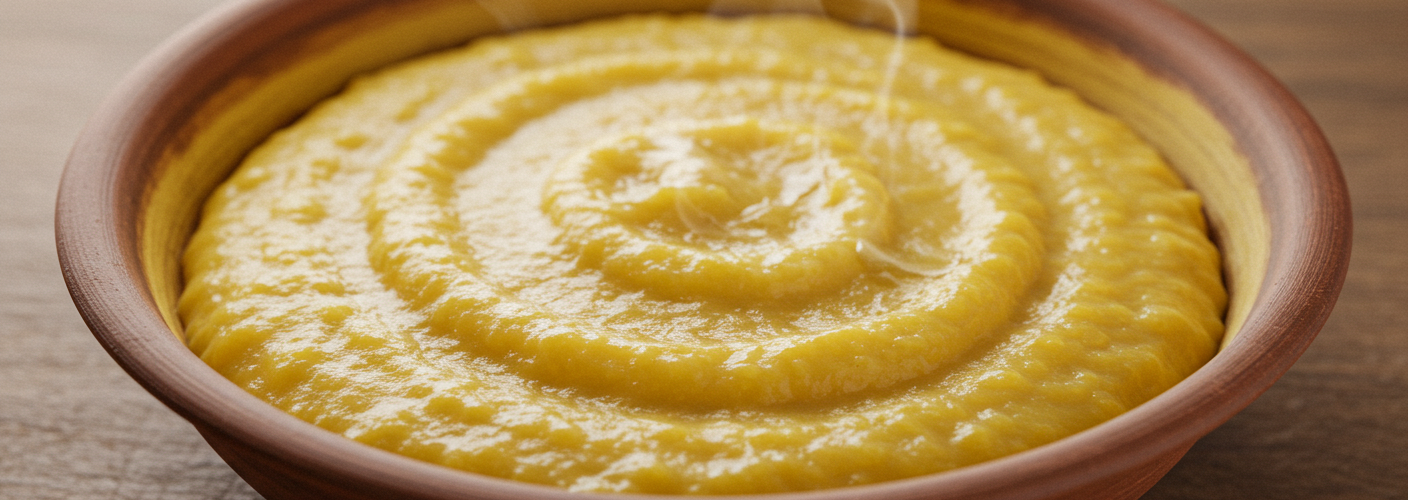Kachamak is a traditional dish that embodies the comforting qualities of maize porridge, cherished by many cultures around the world. This hearty treat is a staple in various regions, especially in Eastern Europe, the Middle East, and parts of Africa, where it has been made for generations. Its simplicity, versatility, and nutritional benefits make it a beloved meal for families, both young and old. In this article, we will explore what Kachamak is, how it’s made, and the cultural significance it carries.
What is Kachamak?
Kachamak is essentially a maize porridge, primarily made from ground maize or cornmeal. Depending on the region, it may be referred to by different names and can have slight variations in preparation and ingredients. The dish typically has a creamy, smooth texture, making it a perfect comfort food. It’s often served warm, providing not just nourishment, but also warmth during cold weather.
One of the most appealing aspects of Kachamak is its ability to complement a variety of flavors. It can be prepared plain or enhanced with an array of toppings. Some regions enjoy it with butter and cheese, while others may serve it alongside meats, stews, or vegetable dishes. The neutral base of the porridge makes it an ideal pairing for both savory and sweet accompaniments.
Simple Preparation Method
Preparing Kachamak is straightforward, requiring just a few ingredients. Here’s a basic recipe to guide you in making this delightful dish:
Ingredients:
- 1 cup maize flour or cornmeal
- 3 cups water or milk (or a combination of both)
- A pinch of salt
- Optional: butter, cheese, or toppings of choice
Instructions:
- Boil the Liquid: In a pot, bring the water or milk to a boil. Add a pinch of salt to enhance the flavor.
- Mix in the Flour: Gradually sprinkle the maize flour into the boiling liquid while continuously stirring to prevent lumps from forming. Stirring is crucial for achieving a smooth consistency.
- Cook Until Thickened: Reduce the heat to low and continue stirring for about 10-15 minutes, or until the mixture thickens into a creamy porridge consistency.
- Serve Warm: Once done, serve the Kachamak warm. You can add butter and cheese on top, or mix in ingredients like honey or fruits for a sweeter version.
Cultural Significance
Beyond its delicious taste and comforting qualities, Kachamak also represents a communal way of eating. In many cultures where it is served, families gather around the table to share this meal, creating lasting memories and bonds. It’s a food that transcends age, often featuring in childhood memories for many adults who remember their parents or grandparents preparing it.
For communities relying on maize as a staple crop, Kachamak is not just a dish; it embodies resilience and tradition. It showcases the resourcefulness of turning simple ingredients into a delightful meal, reflecting the agricultural heritage of the regions it comes from.
Conclusion
Whether it’s a cold winter’s day or a warm summer night, Kachamak provides comfort and nourishment. With its easy preparation, versatility, and rich cultural roots, this maize porridge continues to be a cherished dish across various cultures. Next time you’re in search of a wholesome meal that warms the heart and soul, consider making Kachamak—a dish steeped in the traditions of many and loved by all.




Add comment